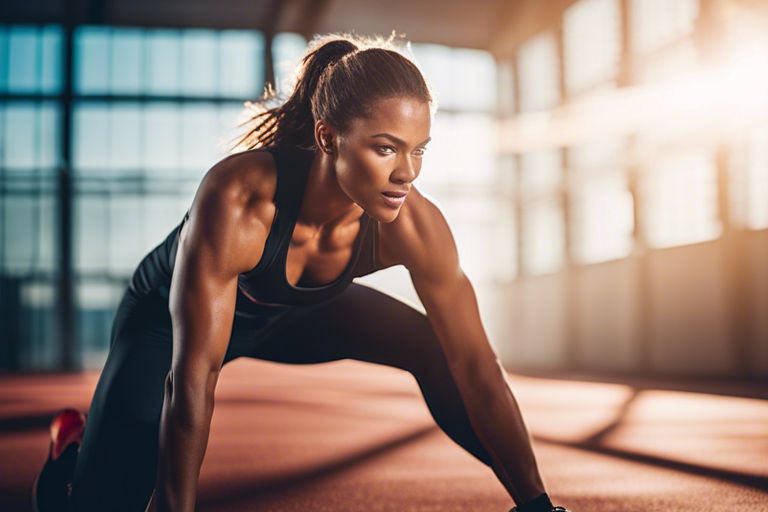It’s imperative for elite athletes to push their limits and constantly strive for improvement. However, incorporating high-intensity workouts into their routine requires careful planning and execution to avoid injuries and maximize results. These challenging exercises, such as plyometrics, interval training, and explosive lifts, can elevate athletic performance to new heights when done correctly. In this blog post, we will explore the benefits, risks, and best practices for advanced athletes looking to enhance their physical capabilities and reach peak performance levels.
Key Takeaways:
- Periodization is key: Structured training programs that incorporate different phases to focus on specific aspects of fitness are imperative for advanced athletes.
- High-intensity interval training (HIIT): Incorporating HIIT workouts can help advanced athletes improve their cardiovascular fitness, endurance, and overall performance.
- Recovery is crucial: Adequate rest, nutrition, and recovery strategies are imperative for advanced athletes to prevent burnout, reduce the risk of injury, and optimize performance.
Optimizing Human Physiology for Performance
Any athlete looking to reach peak performance levels must pay attention to optimizing their human physiology. This involves understanding the role of genetics in athletic prowess and implementing effective nutritional strategies for energy and recovery.
The Role of Genetics in Athletic Prowess
Performance in sports is heavily influenced by genetics, determining factors such as muscle fiber type, VO2 max, and predisposition to certain injuries. While genetics play a significant role, they do not solely determine an athlete’s success. Training, nutrition, and mindset all play crucial roles in athletic performance, allowing individuals to surpass their genetic potential through dedication and hard work.
Nutritional Strategies for Energy and Recovery
The advanced athlete understands the importance of proper nutrition for maximizing energy levels and facilitating faster recovery. Consuming a well-balanced diet rich in macronutrients such as carbohydrates, proteins, and fats is imperative for fueling high-intensity workouts and supporting muscle repair. Additionally, strategic supplementation can help optimize performance and promote overall health.
This comprehensive approach to nutrition not only enhances physical performance but also reduces the risk of injury and illness, allowing athletes to train consistently and achieve their peak potential.
High-Intensity Training Principles
Some of the most advanced athletes in the world rely on high-intensity workouts to push their bodies to the absolute limit. These workouts are designed to challenge the cardiovascular system, enhance strength, and improve overall athletic performance. High-intensity training is not for the faint of heart, as it requires maximum effort and dedication to see results.
Fundamental Concepts of High-Intensity Workouts
Training at high intensity involves performing exercises at or near maximum effort for a set period of time. The goal is to push the body to its limits and then allow for adequate recovery time before the next intense session. High-intensity workouts typically include a mix of strength training, cardio, and interval training to keep the body guessing and prevent plateaus in performance.
High-intensity workouts are known for their ability to rapidly improve fitness levels, increase metabolism, and burn a significant amount of calories in a short period of time. These workouts can be tailored to individual fitness levels, making them suitable for athletes of all levels looking to take their performance to the next level.
Periodization and Adaptation: Timing for Peak Performance
To achieve peak performance, athletes must understand the principles of periodization and adaptation. Periodization involves dividing the training program into specific phases, each focusing on different goals such as strength, power, or endurance. By strategically planning these phases, athletes can peak at the right time for competitions.
With proper periodization and adaptation, athletes can prevent overtraining, reduce the risk of injury, and maximize performance gains. Timing is crucial in high-intensity training, as pushing too hard for too long can lead to burnout and decreased performance. By following a well-structured periodized program, athletes can ensure they are at their peak when it matters most.
Psychological Aspects of High-Intensity Training
Once again, the advanced athlete explores into psychological aspects crucial for high-intensity workouts. Understanding the mind’s role in pushing physical boundaries is a key component for achieving peak performance in sports and fitness.
Cognitive Approaches to Overcoming Physical Limits
Psychological strategies play a pivotal role in conquering physical barriers during high-intensity training. Mental techniques such as visualization, positive self-talk, and goal setting can enhance an athlete’s performance and help them push past their limits. By focusing on mental resilience and adopting a growth mindset, athletes can train their brains to work in harmony with their bodies, enabling them to achieve remarkable feats.
Psychological resilience can be honed through consistent practice and dedication. Athletes who embrace cognitive approaches to training are better equipped to handle the rigors of intense workouts and competitions, ultimately leading to improved performance and overall well-being.
Emotional Resilience in Competitive Environments
Aspects of emotional resilience are crucial in high-stakes, competitive settings where pressure and intensity run high. Athletes who possess the ability to manage their emotions effectively are more likely to perform well under stress and come out on top. Building emotional resilience involves techniques such as mindfulness, stress management, and emotional regulation.
Training the mind to stay calm and focused amidst intense competition can be a game-changer for athletes striving for peak performance. Developing emotional resilience not only improves athletic performance but also enhances overall mental toughness, aiding athletes in their pursuit of greatness.

Innovative Technologies in Training
Now, as athletes strive for peak performance, innovative technologies are revolutionizing the way they train. These advancements are pushing the boundaries of what is possible in athletic achievement, providing athletes with tools to maximize their potential.
Wearable Tech and Biofeedback for Enhanced Training
Technologies such as wearable tech and biofeedback are enabling athletes to track their performance metrics in real-time. Wearable devices can monitor heart rate, oxygen levels, and even provide insights into recovery and sleep quality. This data allows athletes to adjust their training intensity and recovery strategies on the fly, leading to optimized performance outcomes.
Wearable tech also provides instant feedback during workouts, helping athletes stay in their target heart rate zones and maintain proper form. Biofeedback tools, on the other hand, can help athletes improve focus and mental clarity by monitoring brain activity. By leveraging these technologies, athletes can fine-tune their training regimens for maximum efficiency and results.
The Future of Virtual Coaching
An emerging trend in the world of athletic training is the rise of virtual coaching platforms. These platforms connect athletes with expert coaches from around the world, offering personalized training programs and feedback. Through virtual reality simulations and personalized data analysis, athletes can access elite coaching from the comfort of their own training facilities.
Biofeedback in virtual coaching can provide athletes with real-time insights into their physiological and mental states, enabling coaches to make data-driven decisions to enhance performance. The future of virtual coaching holds immense potential for athletes looking to reach new heights in their athletic endeavors.
 1. Tailored high-intensity workouts for elite athletic performance.
1. Tailored high-intensity workouts for elite athletic performance.
2. Focus on explosive power, speed, agility, and endurance.
3. Emphasis on proper form and technique to prevent injury.
4. Structured training plan to optimize performance gains.
5. Incorporates periodization for peak performance during competition.
6. Nutrition and recovery strategies to support intense training demands.
Summing up
In “The Advanced Athlete – High-Intensity Workouts for Peak Performance,” we have explored the science behind high-intensity workouts and their benefits for athletic performance. By pushing the limits of the body through short bursts of intense exercise, athletes can achieve peak physical condition and improve their endurance, strength, and speed. Just as nature selects the fittest organisms to survive and thrive, high-intensity workouts help athletes adapt and excel in their chosen sports. Through a disciplined approach to training and a commitment to pushing boundaries, advanced athletes can reach new heights of performance and achieve their full potential.
FAQ
Q: What is ‘The Advanced Athlete – High-Intensity Workouts for Peak Performance’ about?
A: ‘The Advanced Athlete – High-Intensity Workouts for Peak Performance’ is a comprehensive guide that focuses on high-intensity workouts designed to help athletes achieve peak performance in their respective sports.
Q: How can high-intensity workouts benefit athletes?
A: High-intensity workouts can benefit athletes by improving their cardiovascular endurance, strength, speed, and agility, ultimately enhancing their overall athletic performance.
Q: Are high-intensity workouts suitable for all athletes?
A: High-intensity workouts are best suited for advanced athletes who have a solid fitness foundation and are looking to take their training to the next level. Beginners should start with a lower intensity to avoid injury.
Q: What are some key components of high-intensity workouts for peak performance?
A: Some key components of high-intensity workouts for peak performance include interval training, strength training, plyometrics, and explosive movements that challenge different energy systems in the body.
Q: How often should athletes engage in high-intensity workouts?
A: Athletes should incorporate high-intensity workouts into their training regimen 2-4 times per week, allowing for adequate rest and recovery between sessions to prevent overtraining and maximize performance gains.

